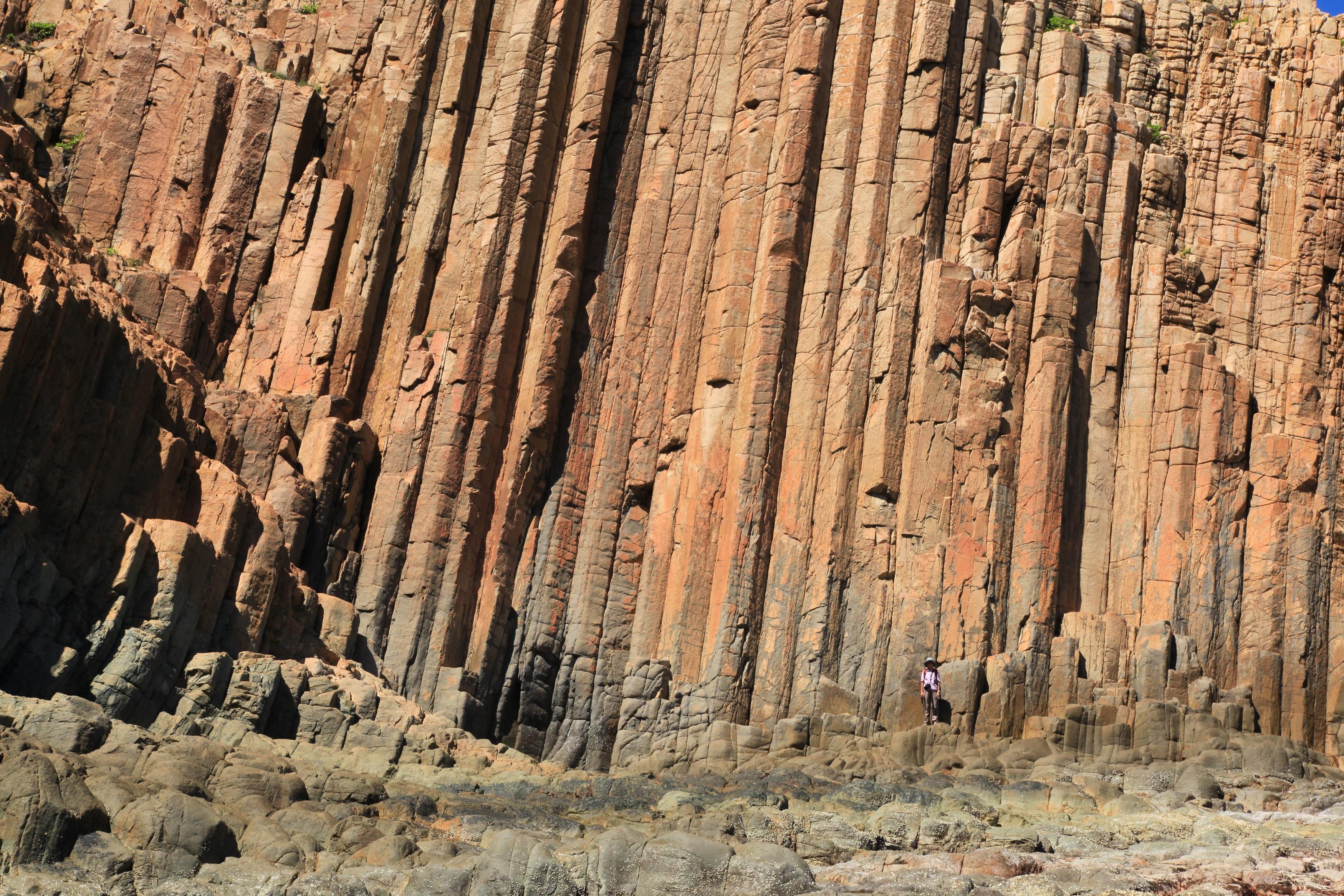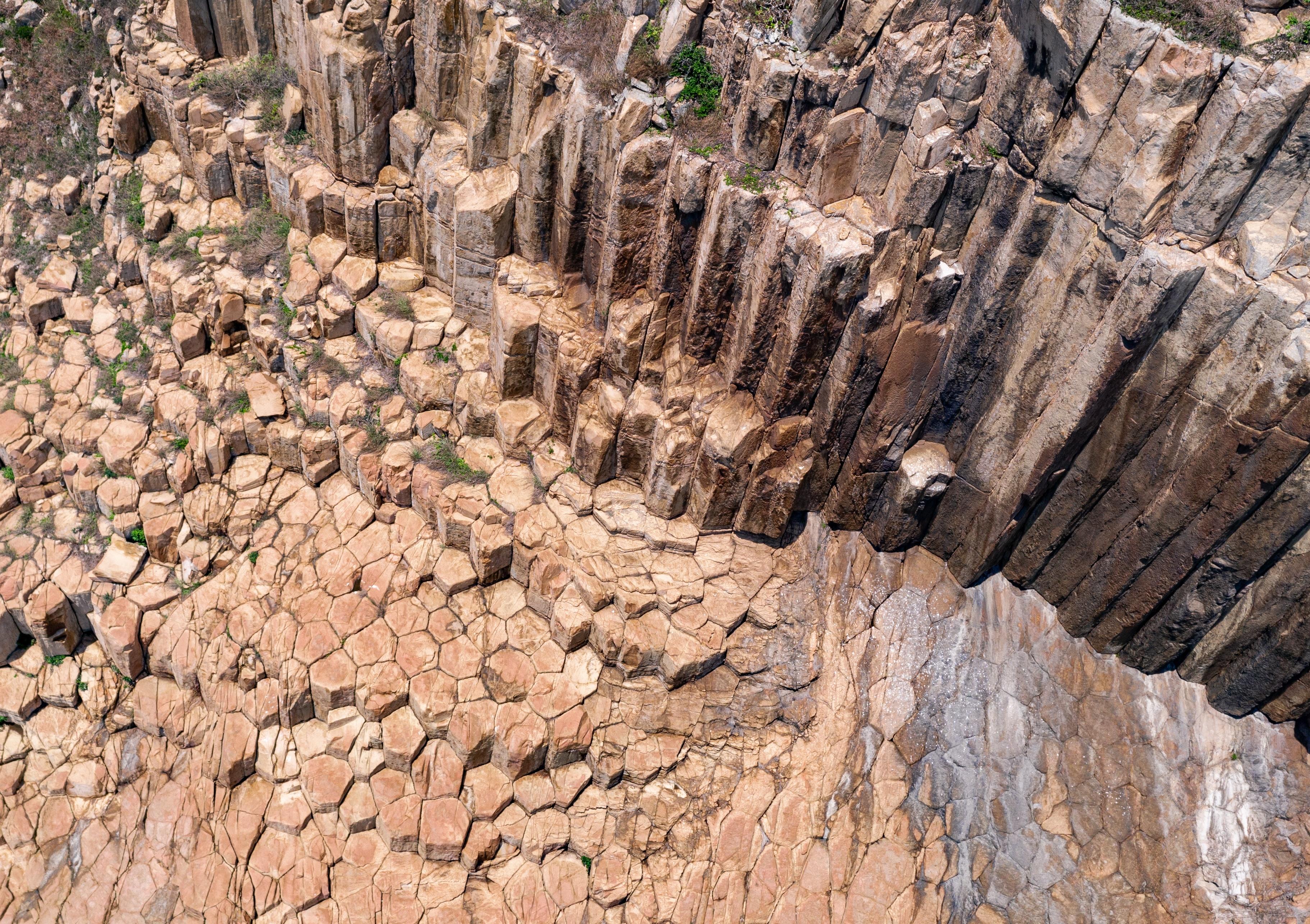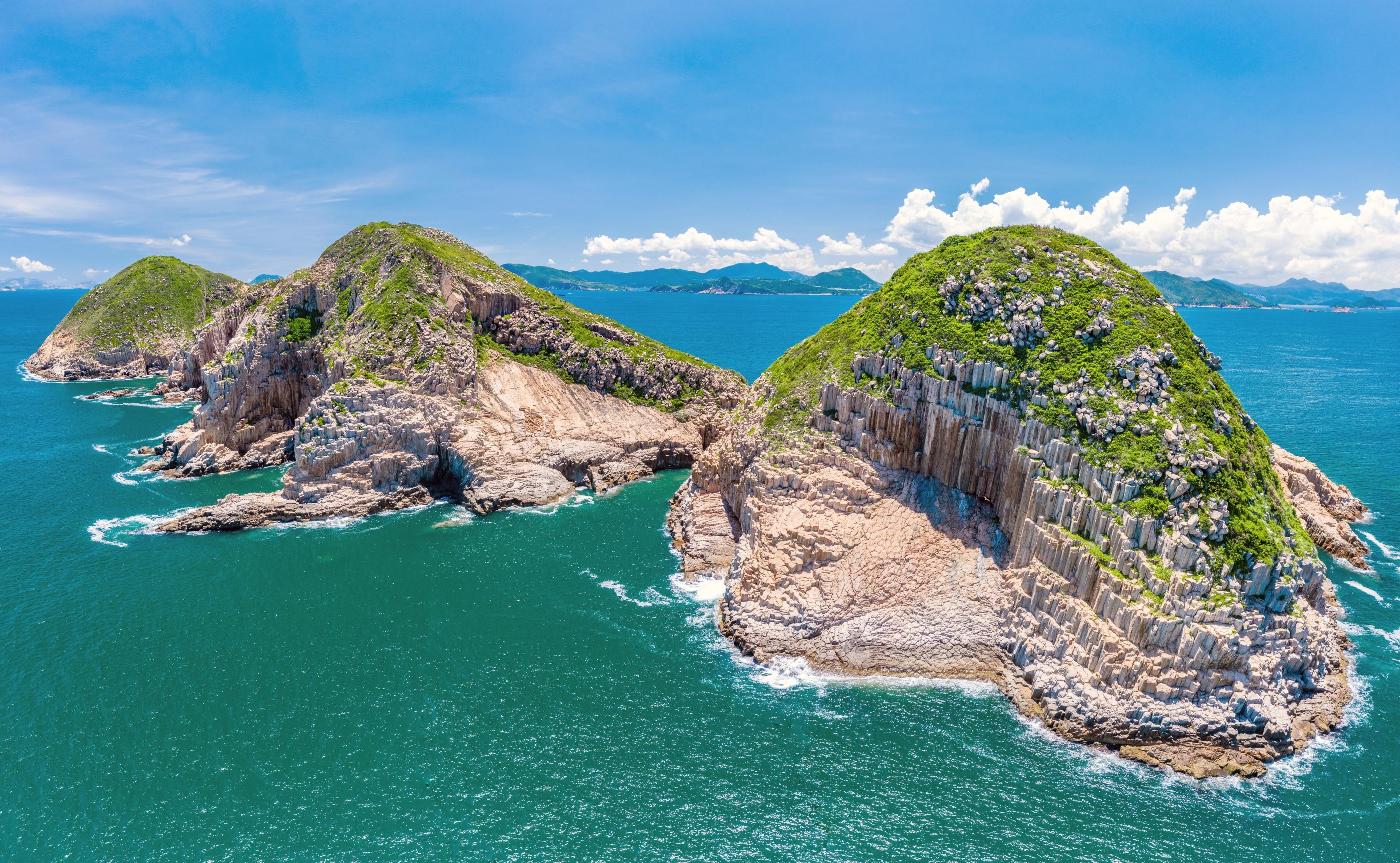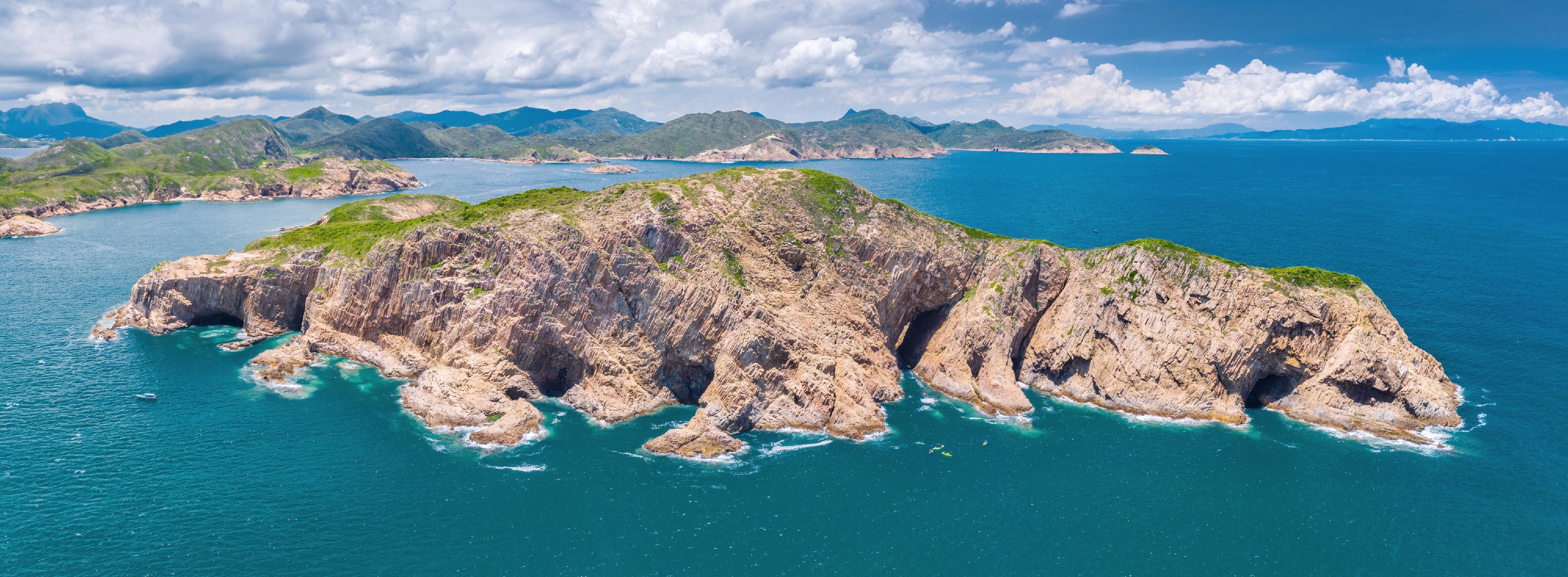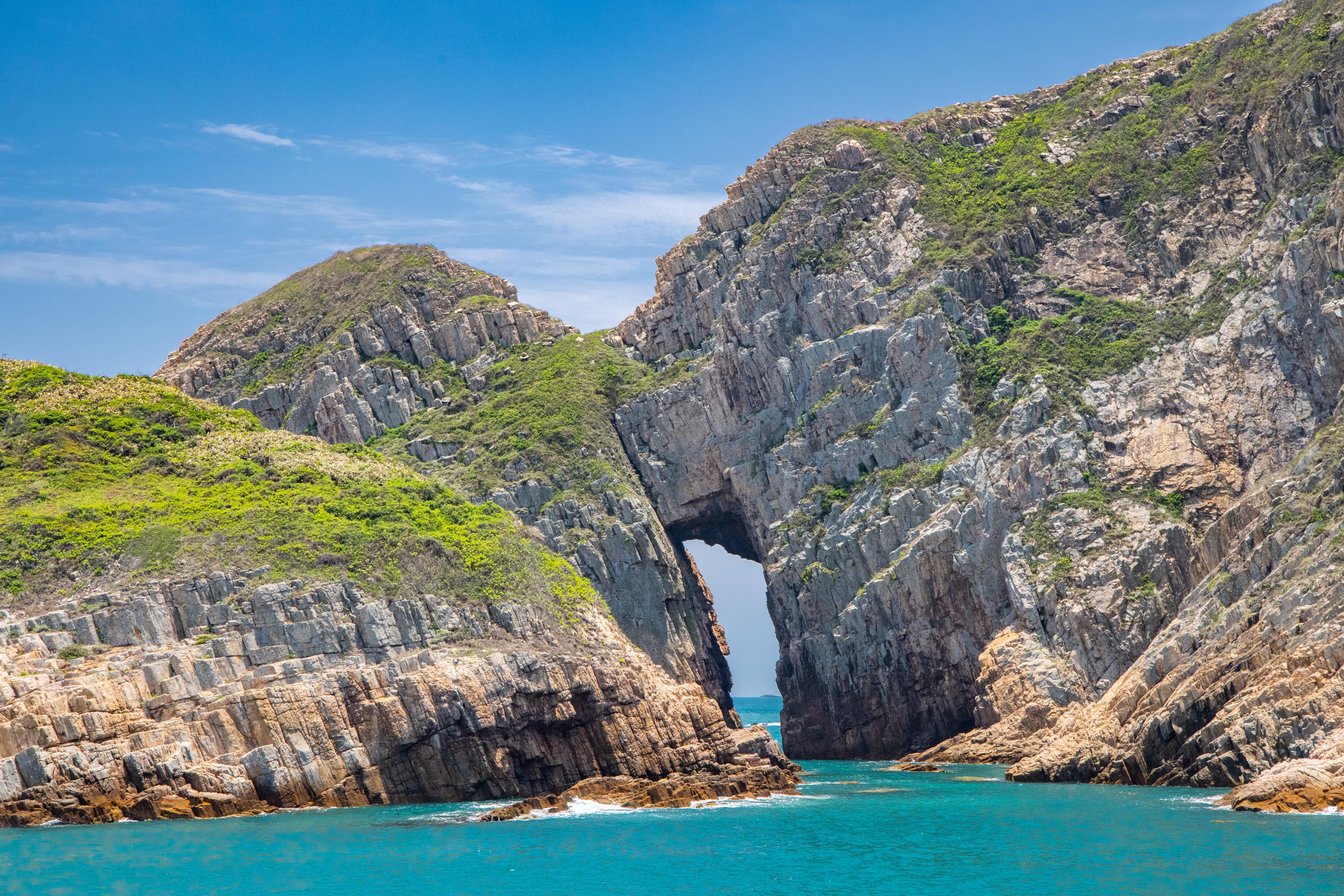Early Cretaceous rhyolitic columnar rock formation of Hong Kong Geopark selected as one of the First 100 IUGS Geological Heritage Sites (with photos/video)
******************************************************************************************
A spokesman for the AFCD said, "The Early Cretaceous rhyolitic columnar rock formation visible along the coast and on numerous islands in Sai Kung is named the High Island Formation. It has been incorporated in Hong Kong Geopark since 2009. The formation comprises a great number of columns, which are large, well preserved and widely distributed, making it a globally rare and iconic geological wonder. The selection of the High Island Formation as one of the First 100 IUGS Geological Heritage Sites recognises its international importance."
Hexagonal rock columns elsewhere around the world are usually composed of dark-grey basalt with low silica content, while the High Island Formation is composed of light-coloured rhyolitic volcanic rock that is rich in silica content. This columnar rock formation spreads over areas on High Island of Sai Kung East Country Park, Kau Sai Chau, Jin Island, the Ung Kong Group and the Ninepin Group, covering an area of about 100 square kilometres on land and under the sea. The average diameter of the rock columns is about 1.2 metres while some reach 3m in diameter. The exposed height above ground of the rock columns is up to 100m.
According to geologists, the columnar rock formation in Sai Kung originated from volcanic activities in the region about 140 million years ago. Intense crustal activities created a large volcano in the southeast part of Hong Kong. Experts believe that a volcanic eruption spewed a large amount of volcanic ash and lava. The volcano eventually collapsed, forming a caldera of about 20 kilometres in diameter. Deposited in the caldera, a huge amount of volcanic materials slowly cooled down and contracted, forming the hexagonal volcanic rock columns.
The selection of IUGS Geological Heritage Sites aims to recognise geological heritage sites of high international scientific significance around the world to promote their conservation, education and geotourism. The First 100 IUGS Geological Heritage Sites are being announced October 25 through October 28 (Spain time) in Zumaia, a town in the Basque Coast UNESCO Global Geopark, Spain. The selected geological heritage sites include Shilin Karst on the Mainland, Uluru/Ayers Rock in Australia, the Grand Canyon in the United States and Pamukkale Travertines in Turkey, among others.
This project is a collaborative effort involving international organisations such as UNESCO's International Geoscience and Geoparks Programme, geological survey institutions and research institutions around the world. One hundred and eighty-one sites in 56 countries were nominated. All nominations were evaluated by no less than three international experts, and a total of 33 international experts participated in the evaluations. For more details of the First 100 IUGS Geological Heritage Sites, please visit: iugs-geoheritage.org.
Ends/Saturday, October 22, 2022
Issued at HKT 23:45
Issued at HKT 23:45
NNNN
Photo
Audio / Video
Early Cretaceous rhyolitic columnar rock formation of Hong Kong Geopark selected as one of the First 100 IUGS Geological Heritage Sites





